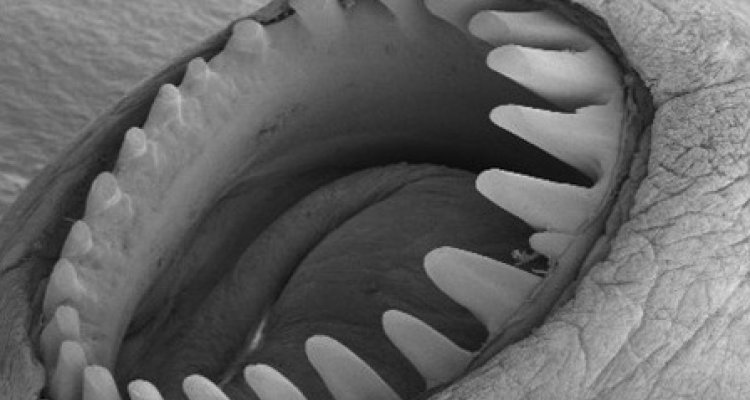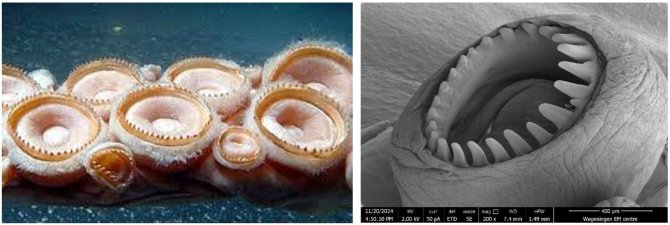
Thesis subject
Hooked on fishing: How squid catch prey using sucker ring teeth
In 1873 a fisherman called Tom Picot and his crew were attacked by a giant squid in Newfoundland. Fortunately, they could scare the squid away with an axe and by doing so, they cut off a piece of squid arm, providing the first proof that giant squid exist. Interestingly, the giant squid arm had suckers with horrifying large teeth, the function of which remains still unknown.
We want to study what the function of these teeth are. Do they aid in sucker performance? Or do they aid in friction? And can this be related to prey type? We will study this by studying the teeth morphology of the veined squid (Loligo forbesii) and perform force measurements to test how teeth affect pull off and shear performance.
We are looking for a motivated student (MSc thesis or 24 ECTS BSc thesis) that is interested in studying these sucker ring teeth. We use various techniques to study these teeth which we can tailor depending on your interest. For morphology, we want to look at the angle and size of the teeth along their arms, using mostly standard microscopy combined with CT-scanning, electron microscopy and histology. For force measurements, we will use different teeth models and build an experimental set-up to test pull off performance and shear performance of suction cups with sucker ring teeth. Together, this will aid in answering the question why squid have sucker ring teeth.

If you are interested in studying morphology and want to learn a range of cool techniques, do not hesitate to contact us via ezo.thesis@wur.nl to ask for the options.